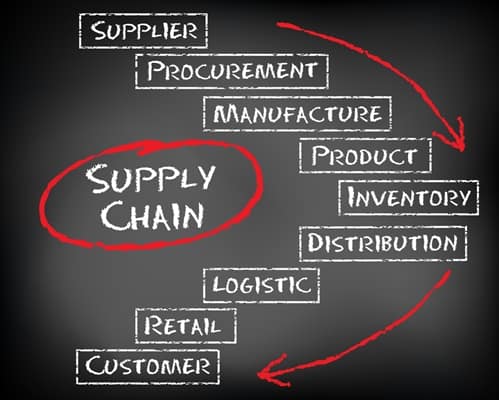A comprehensive overview of ERP implementation approaches

Over the past several years, ERP technology has taken the world by storm and moved from large enterprise systems to main stream. Cloud based enterprise resource planning software like Microsoft Dynamics 365, Oracle NetSutie and Sage Intacct have become popular with small to medium sized businesses, allowing businesses of all sizes and types to better manage team members, customer expectations and maintain visibility of their supply chain.
Whether it’s to replace legacy systems, streamline data migration or take advantage of state-of-the-art technology, ERP technologies are designed for businesses that seek improvement. In fact, it’s estimated that close to half of all companies have either upgraded to an ERP solution or plan on doing so, according to polling conducted by Technology Evaluation Centers.
Digital transformation is a major reason why ERP systems have gained such popularity and notoriety. In real-time, using ERP architecture, business owners can observe what’s happening in every department and keep tabs on sales, inventory management, materials management, projects, payables and receivables, among other functionalities and business processes. This increases transparency, reduces process times and enhances collaboration. With today’s cloud ERP solutions, data is presented in easily digestible graphs and bar charts can be called up immediately, on any device and from anywhere.
However, for ERP technology to be a truly effective solution, there first must be execution. If you’re still deciding on which of the ERP vendors offers the best software or you’ve already selected one and are ready for the next step, the following will help you learn more about the process and why it’s important to have an implementation team dedicated to that task.
What is ERP implementation?
ERP implementation refers to the way in which organizations go about setting up the infrastructure and tools that enterprise resource planning needs to work. Once the structures and systems are in place, businesses are able to make more informed decisions about operational issues by tracking workflows, generating reports, and reviewing financial statements, among other functionalities.
None of this can happen without first establishing an ERP implementation plan. Any project or effort entails an initial planning phase, but this is particularly important for ERP implementations because ERP is designed to offer a bird’s-eye view of a company’s many different facets. If the solution is poorly planned and implented, productivity within multiple departments could be impeded.
Indeed, as popular and effective as ERP software systems have proven to be for the companies that have installed them, they don’t take. For example, according to Technology Evaluation Centers, approximately 50% of ERP implementations overall fail on the first try. Additionally, roughly two-thirds of businesses who underwent ERP implementation say they encountered operational disruptions at some point along the way, based on polling conducted by Panorama Consulting.
In short, pickign the right partner and establishing the right ERP implementation plan and methodology – meaning the approach – is every bit as important as the ERP software itself.
There are several potential ERP implementation approaches, according to Mary Dunaway, information systems department professor at the University of Arkansas. They include the following:
- Joint venture – These are collaborative implementation strategies, where two or more companies take on the project together, usually from the same industry.
- Company driven – These are handled by the company itself that has purchased the ERP software solution, which usually has a department within it handle all the effort, like IT.
- Vendor-led – Here, the vendor that is selling the ERP system provides a template or blueprint to direct the ERP project, making slight adjustments that align with the company’s needs. Because vendors are doing these projects constantly, they can offer best practices and knowledge of the solutions that most industry and internal teams don’t usually have.
- Combined company-driven and vendor-led – Finally, this ERP methodology relies on the vendor and the company investing in the ERP working in a cohesive fashion throughout the project to achieve authentic ERP system success. This combines the company’s knowledge of their business’s unique business requiremens with the vendors knowledge of the solution and industry best practices.
Businesses must decide for themselves which approach works best, based on their goals, capabilities, responsibilities and available financial resources.
How much does an ERP implementation cost?
Much like the wide variety of products and services businesses sell and provide, how much an ERP implementation process costs is difficult to pinpoint. Much of it depends on how intricate the ERP system is, the size of the company that’s putting in place and the software itself. According to a 2019 ERP Software Report from Software Path, the average budget for ERP projects run roughly $7,200 per user over a five-year period. For companies with between 1 and 49 employees, the average is $7,143 per user and approximately $8,542 per user for businesses whose employee count is 50 to 249. The cost is approximately $7,257 for businesses with 250 workers or more.
These figures should be viewed as guidelines, not hard and fast rules.
How long does ERP implementation take?
Here as well, timelines can vary. Naturally, the smaller a company is, the less time that’s required. On average, ERP implementations are often more protracted than ERP adopters initially assume. Polling done by Technology Evaluation Centers suggests the entire process is usually 30% longer than estimated.
Effective ERP implementation can help make complicated business operations much more manageable. As a Microsoft Dynamics provider, The TM Group has all of the ERP and CRM solutions and knowledge you need to streamline business processes and get to know the in’s and out’s of your business and it’s day-to-day affairs. We also provide step-by-step training so your staff can learn all the nuances of whichever software program you select. Contact us today to learn more.


